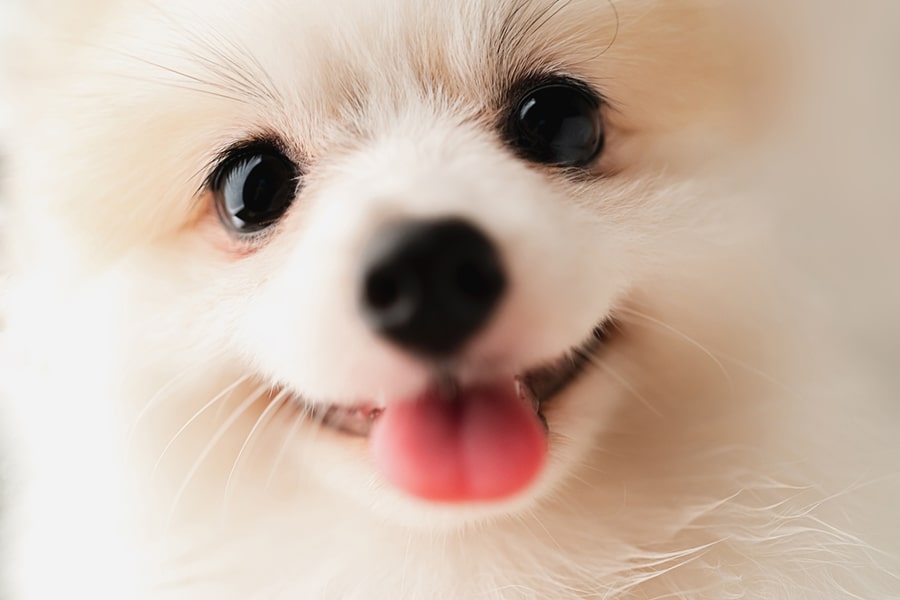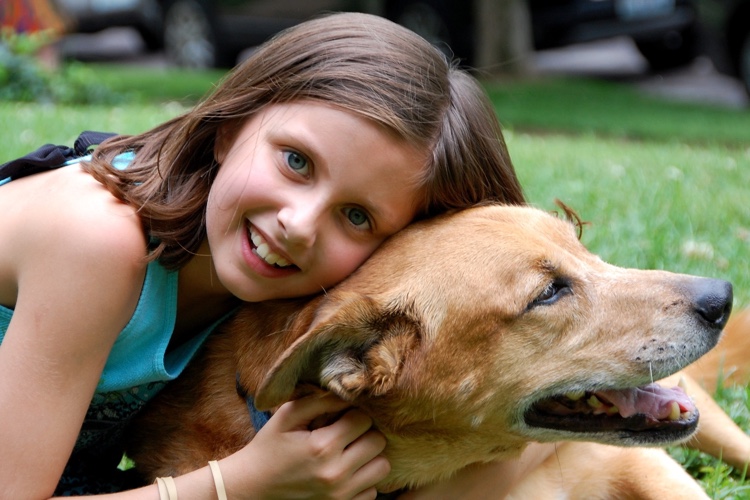
Ever wonder what goes on between your dog's furry ears? We can never know for sure, but it's fun to make some educated guesses.
What goes on in my dog's mind?
Our dogs can't use words to tell us what they're thinking, but they have other ways of communicating with us. For instance, you can learn a lot about your dog's emotional state from their behaviors.
Happy dogs wag their tails and perk up their ears. Scared dogs often tuck their tail between their legs and lower their ears. Anxious dogs may growl and back away.
If you know your dog well, you can typically figure out what's causing those responses. For instance, a wagging tail might be saying, "thank you for the tasty treat." That scared look could be telling you they're worried the vacuum is going to eat them. And those low growls could be a sign that they're not so sure about that new person who wants to pet them.
While we can make some assumptions based on a dog's non-verbal cues, we can't be certain what's running through their heads. It's as mysterious as their dreams. Is that a squirrel they're chasing while they twitch and whimper? Are they running to fetch a ball? Or are they fleeing from the monstrous vacuum cleaner?
Research shows that dogs can understand our words and emotions better than you may have thought.
Does my dog think we are a pack?
A pack consists of a group of members who work closely together to keep each other safe and fed. Packs were essential to the survival of canine wolf ancestors, and they continue to be an important concept for our domesticated pups. Packs have a clear hierarchy, and everyone involved understands where they fall on that ladder.
Sounds a bit like a human family, right? Despite the similarity, it's still debated as to whether or not this dog pack mentality translates to our own family units. Some experts believe that dogs know we are a different species, so they wouldn't consider us eligible for their furry four-legged group.
That said, dogs often treat us as like we're part of one big happy pack. They can be incredibly loyal and loving to their family members. They rely on their human alphas to take care of them.
If your dog doesn't see you as their alpha and ignores your commands, some professional training may be in order.
What do dogs think when you kiss them?
Dogs are like our children, so it's no wonder we like to shower them with kisses. Not all dogs enjoy kisses and hugs, but those who do have to understand that they're a sign of affection—especially when they come with heaps of praise.
Some dogs come running when they hear kissy noises. They're probably thinking, "Hooray! My person loves me, and they're going to smother me with attention." They might plant some sloppy kisses on them too.

Do dogs think we are their parents?
The bond between a doggo and their person can seem a lot like the one between a child and their parent. Like human kiddos, dogs count on us to protect and care for them. We make sure they're well-fed, have a safe and cozy place to rest, enjoy plenty of fun toys, and get lots of love and affection.
It's hard to say whether your dog understands this as a parent/child relationship. But lots of dogs sure act like we're their mom or dad.
For instance, some dogs see us as a "secure base," which is a phrase used to describe the relationship between an infant and their parent. These dogs continually check to make sure their person hasn't gone too far away. They feel confident and ready to explore the world as long as they can return to their base.
Do dogs think about the future?
Many of us like to believe that our dogs are always living in the moment. Whether they're catching a frisbee or snuggling with you on the couch, they seem fully present.
But our modern dogs probably think about the future. Their wolf ancestors certainly needed to think ahead to make sure they had enough to eat and somewhere safe to sleep. Our pampered dogs don't have to plan out their days, but they sure seem to look forward to meals, playtime, and that moment when you come through the front door.
Dogs also have memories of the past. For instance, dogs who lived in an abusive or neglectful home often remember their experiences. It can take them a while to get used to a new loving home, and they may act out when something reminds them of those difficult times.
Are you getting ready to welcome a new puppy into your home? Find out what you need to know to prepare for your sweet furball.
What does my dog think when I leave?
Does your dog get upset when you leave the house? You're not alone. Lots of dogs seem distraught when their person heads out the front door. They may truly be sad that you're gone—or they might be having a moment of FOMO wondering what fun things you'll be doing without them.
Some dogs do fine home alone, while others have separation anxiety that can lead to unwanted behaviors. You might return home to discover chewed-up shoes, garbage all over the floor, or holes dug into the carpet.
If your dog has separation anxiety, you can try to make them feel less lonely while you're out. Leave on some soothing music or put a nature show on the television for them to enjoy. You can also set up a 2-way video device to drop in on your dog virtually using an app on your phone.
Pet insurance can cover the diagnosis and treatment for behavioral conditions, such as separation anxiety. Learn more about what's covered.
How to stimulate your dog's brain
Dogs need mental stimulation to stay happy and healthy. Giving them ample opportunities to exercise their minds can help keep them mentally sharp and prevent cognitive decline as they get older. It can also help avoid unwanted behaviors.
There are lots of ways to enrich your dog's environment and encourage them to use their brain. For instance, offer them puzzle toys to play with, hide treats around the house for them to find, or set up an obstacle course with jumps and tunnels for them to navigate. You can also teach your dog new tricks like giving high fives, shaking hands, speaking, dancing, rolling over, or playing dead.
Your dog will be thinking, "Wow, this is so fun. I really love my human."
The information presented in this article is for educational and informational purposes only and does not constitute or substitute for the advice of your veterinarian.
Helpful resources for pet parents
Browse categories
-

Do Dogs Like to Be Hugged?
Hugging doesn’t come naturally to dogs, but that doesn’t mean some of them don’t enjoy a good squeeze!
-

Exotic Shorthair Cat Facts
With a combination of their friendliness and nonchalant personality, Exotic Shorthairs make for the perfect addition to practically any family.
-

What is Inflammatory Bowel Disease (IBD) in Cats?
Learn all about the causes, symptoms, diagnostic tests, and treatments that come along with cat inflammatory bowel disease (IBD).

Browse Categories
(opens new window)
